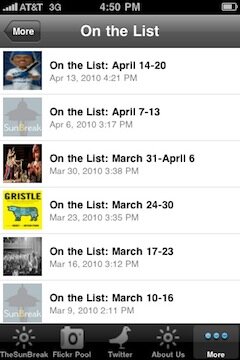posted 03/26/10 03:00 PM | updated 03/26/10 03:04 PM
Featured Post! | Views: 0 | Comments : 2 | Features
Remembering the Kingdome on Its 10-Year Implosion Anniversary
Save and Share this article
Hello!
The SunBreak is an online magazine of news & culture. It's a conversation about all the things on Seattle's mind (more about us). Got a post for us? We'd like to see it. Or just send us . If you'd like to contribute regularly, .
Twitter: @thesunbreak | Facebook
iPhone app download (Free!)
Twitter: @thesunbreak | Facebook
iPhone app download (Free!)
advertisement
Subscribe to The SunBreak
Regular reader? Subscribe to The SunBreak for just $1 per month, and help keep the news & culture coming. The subscription lasts for 1 year. Cancel at any time.
Delivery Options
 Subscribe to our Front Page Stories
Subscribe to our Front Page Stories
Delivery Options
![]() Subscribe to all SunBreak Stories
Subscribe to all SunBreak Stories
Daily Email Digest of The SunBreak
Most Viewed Stories
Recently in Our Flickr Photo Pool
www.flickr.com
|
advertisement
Seattle Weather
Latest Headlines
advertisement
Neighborhood Blog News
Niche Blog News
Get the SunBreak iPhone App

Take "On the List," our weekly picks of Seattle events & shows, with you wherever you go--along with all our SunBreak stories, always-on Twitter feed, and visually appealing Flickr photo pool.
Download the SunBreak iPhone app for free. You're gonna like the way you look.
Not a Member?
Sign Up



Most Recent Comments